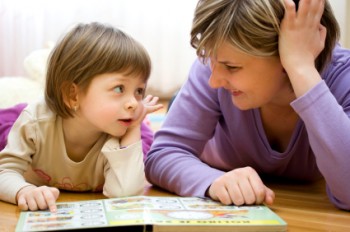When I was at a Neiman Marcus style event a few weeks back, I had the pleasure of meeting Lisa Taylor Richey, President and Founder of The American Academy of Etiquette, Inc. We struck up a conversation and I learned that she teaches etiquette both in real life and online, particularly focusing on children. Unfortunately etiquette is becoming a lost art, and I am so excited to hear of her work.
I asked Lisa if she would be interested in guest posting for me while I’m on vacation, and here she is!
A Confident Child: It Starts with Eye Contact

I have good news. Self-confidence can be a learned trait and it starts with awareness. Time and time again I receive phone calls from parents asking for my help with shyness and low self-esteem issues with their children. We want our children to move through life with ease, boundless opportunities, good friends, and adventure.
Eye contact is the basis of a self-confident child. There are many things you can do to assure your child has endless amounts of self-confidence. Let’s start with eye contact. Here is how you can incorporate this at home:
Be fully present with your child. With iPhones, iPads, Blackberries, etc. we are constantly challenged to be fully present and in our “now”. What a gift you can give an adult or a child by giving your undivided attention. Put aside your phones or the latest project and spend time with your little one – quality time without interruption.
Make eye contact. The latest email can wait…trust me. Explain eye contact and how to make it. This sounds so simple, but it works. Look at your child and point out what you are doing and why. Of all my topics, teaching eye contact is the most gratifying experience because I can see a child light up and understand what it feels like to be confident. He gets it….immediately. I see a marked difference by the end of class.
Over the years I have noticed when you bring awareness to what confidence is and how it feels inside to have eye contact, the child makes a radical change, instantaneously. Try it, it works. Remember, your children are watching you.
Model eye contact and be fully present. Kneel down to their level. With this action, they are able to focus their attention on you. Making eye-to-eye contact with them makes it easier for your child to actually see you and to listen to what you have to say.
 Lisa Richey has been teaching good manners for children, adults, and educators since 1999. She is the author and creator of the popular program, Manners To Go. You can reach her at Manners To Go and American Academy of Etiquette. or follow her on Twitter at @mannerstogo.
Lisa Richey has been teaching good manners for children, adults, and educators since 1999. She is the author and creator of the popular program, Manners To Go. You can reach her at Manners To Go and American Academy of Etiquette. or follow her on Twitter at @mannerstogo.








18 Responses
As a mom and teacher I am soooo glad to read this post. One of the rules with my own children, and with the children in my classroom, is that they MUST make eye contact when someone is speaking to them.
Thank you for sharing!
Ashley DeMazza
Falls Village, CT
I admit, it isn’t something I have thought a lot about. But it’s such a good practice to encourage!
I am trying to be aware of this more and more (and so sad that it is something that has to be practiced and doesn’t just happen naturally!) – one thing for us is dinner time. It’s such a good time to “see” each other. But we have definitely adopted the “no screens!” phrase in our house when needed.
Steph
I think having dinner together (with no outside distractions) is key. We have always done this, even in the early days of our marriage pre-kids. I think b/c it was a tradition in both of our homes growing up, it was never an issue. We sit down and have dinner and converse with one another. We never thought of doing anything else. Even with the busyness of baseball season, we work our dinner time around my son’s schedule.
That said, I think kids do need to be reminded to look adults in the eye and speak up. We’re working on that! 🙂
This is Great advice. Its simple, easy, FREE and extremely effective. No frills and 100% practical. U teach ur child that they r important and worth listening to when u look at them! Its a double wammy! Great advice.
Wonderful advice! I’m always working with my children on eye contact with both adults and children. It’s so very important. Thanks for sharing.
This is such a struggle for me! I’m very socially awkward, and have a difficult time making eye contact with anyone, including my husband and son. I really have to force myself to do it, and if I’m not careful, I’ll forget and spend my entire day avoiding everyone’s eyes. I worry constantly that my son will feel he’s not important to me, because I don’t make eye contact….but I’m trying!
It can be really hard for some adults. I think it’s great that you’re aware and working on it. And I’m sure your son knows he’s important to you. 🙂
Love this! My daughter is going in 7th grade and she has a former (due to very different interests the older they’ve gotten) friend who not only can’t look me in the eye (even though she knows me well and it never used to be a problem) but doesn’t even look up from the ground when she (hardly) speaks to me.
This girl just started babysitting and her mother (a good friend of mine) sent out an email saying that she was Red Cross certified and looking for sitting jobs this summer. I desperately needed a sitter yesterday for my 9 year old and, even though I have no doubt that this girl would’ve kept my son safe, I just couldn’t bring myself to call her…and I KNOW her…I can only imagine how this will affect her in the future.
I have loved reading everyone’s comments on this topic. Teaching our kids these basic manners serve them very well as they get older. As a kindergarten teacher I find I am teaching many of these things…it just is not a part of the home for many kids. I also agree with the comment that one of the best things we can do is look at our kids when they are trying to talk to us. It is a two way street.
Ashley DeMazza
Falls Village, CT
Eye contact is something that my 13 year old daughter has trouble with because she lacks confidence. She gets nervous when she talks to people other than family and cannot look them in the eye. She knows it, and as a teenager, she gets defensive when we talk to her about it. Not sure how to help her on this. Any suggestions?
Lisa may have some insights I don’t, but I think that keeping the lines of communication open, and modeling it is all you can do at that age. My mom always tried to help me not slouch and not talk so fast. I still do both. It’s just so ingrained in me. Oh well. We do what we can as parents, and the rest is the way it is! 🙂
Hi Lee Ann,
I think this is something lots of kids your daughter’s age struggle with. Perhaps you could start by focusing on eye contact with people you know she is comfortable with…such as your immediate family and maybe grandparents. Give her lots of praise when she is able to consistently make eye contact with them (which I am sure you do anyway) and then pick one other person you want her to really to make eye contact with. I am sure with your help she will get there. It is a tough age to be sure!
Ashley DeMazza
Falls Village, CT
This is a very concise article. And very appropriate in this day and age. I, myself, have experienced sitting in front of someone (already an adult), having a conversation, all the while the other person is constantly checking her phone or texting. It gave me the subtle, though probably unintended, message that I’m not “important” enough to converse with that she’d rather spend half of the time texting. This article is a good lesson for me to start teaching my toddler, and practicing it myself, to have eye contact, not just for the benefit of boosting his self-confidence, but also teaching him to respect the other person he’s talking to. Thanks for posting. I love reading through your blog.
Hi Sheila,
I have also had that experience. It is amazing that how many adults struggle with this.
Sadly it’s not something that can be taught to everyone, my 13yo has Asperger’s and one of the main things you notice about him (sometimes it’s the only thing!) is that he doesn’t make eye contact. We are constantly working on it, but I feel sad for him that people will judge his manners or behavior based on that and other issues that he struggles with.
I personally don’t make eye contact that well if I’m overstimulated (hello, BlogHer). I’ve learned to force myself to but I also think my chosen career (social media) makes it easy to hide behind my phone sometimes when I’m in the company of other social media moms and I love that it’s ok then but make every effort to put away the phone and focus when I’m with most people since checking in on Foursquare, tweeting and Instagraming isn’t something they usually understand!
I think it would be a huge mistake not to differentiate between ‘teaching that eye contact is good and what it feels like when you make more eye contact’ and actually inducing a significantly higher frequency of eye contact in social behavior. The latter is an unconscious deeply patterned behavior involving a wide swath of neural processes and to my knowledge there is no way to induce a significantly higher frequency of eye contact over the long run. Also it is important to point out that even a brief engagement with the research literature on the topic would teach that an extended directed gaze can be evidence of social anxiety and probably over-communicates engagement and may even signal aggression (re: glaring). I agree that it is important to remind an eye-contact-averse child to try and make eye contact with that child. But it could very well go the wrong direction and maybe the state of affairs may need to be met with acceptance. I am a hyperlexic and have two children who are also eye-contact-avoidant. I’ve taught myself to make eye contact and have taught my children as well. But we ultimately cannot automate this eye contact and make it unconscious like others and we rapidly slip back into the old dominant patterns. Ultimately we are all socially different and the world needs the breadth of our variation.
You make some very good points. Thank you for sharing.
Ashley DeMazza
Falls Village, CT